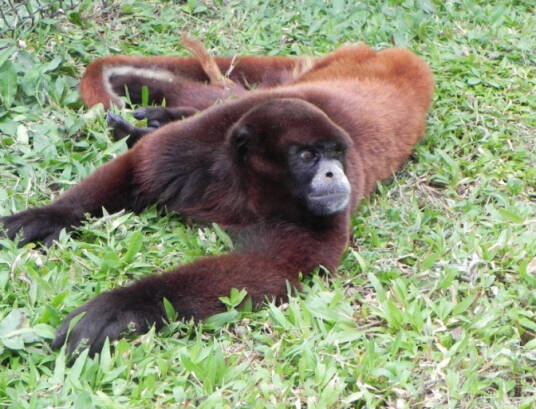Lagothrix flavicauda
IUCN
LCBasic Information
Scientific classification
- name:Lagothrix flavicauda
- Scientific Name:Lagothrix flavicauda,Peruvian Yellow-tailed,Yellow woolly monkey
- Outline:Primates
- Family:Theridiidae Y.w.monkey
Vital signs
- length:40-60cm
- Weight:About 10kg
- lifetime:No verification information
Feature
One of the world's most endangered primates
Distribution and Habitat
Distribution is limited to some forests in the Peruvian Andes. Habitat is tropical mountain cloud forest.
Appearance
It weighs about 10 kg. It has many different appearances, with short and dense fur, usually brown, gray, reddish or black, and a yellow tail. It has a large and round head, a naked face, black or brown. It has strong limbs, a large tail, and the ability to hold things in place.
Details
Peruvian Yellow-tailed (Lagothrix flavicauda) is a diurnal monkey that likes to live in groups. It often lives in small groups with capuchins, howler monkeys and other monkeys. It usually walks on all fours and moves slowly. It also often uses its hands, feet and tail, or just its tail to swing on the tree. It can stand upright on the ground, using its tail as support. The gestation period is about 225 days, with one baby per litter. It matures sexually in about 4 years. It mainly feeds on fruits and leaves, and can eat all kinds of food when it is raised. It is gentle and docile; but it needs a certain degree of careful care when it is raised. It will cry when it is in a bad mood.

Yellow-tailed woolly monkeys often interfere with crops in nearby villages, damaging and stealing crops to provide food for themselves and their young, but this can lead to local farmers threatening or hunting these monkeys.
The yellow-tailed woolly monkey is one of the 25 most endangered species in the world. There are only 250 left in the world, making it one of the most endangered primates in the world. Some scientists have carried out a survey and protection project for the yellow-tailed woolly monkey in the jungle of Peru.
Listed in the 2008 Red List of Endangered Species of the World Conservation Union (IUCN) ver 3.1 - Critically Endangered (CR).
Listed in Appendix I, Appendix II and Appendix III of the Convention on International Trade in Endangered Species of Wild Fauna and Flora (CITES) 2019 Edition Appendix I.
Protect wild animals and stop eating game.
Maintaining ecological balance is everyone's responsibility!








